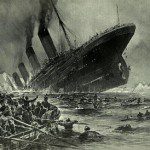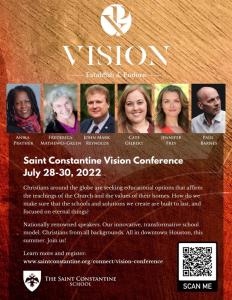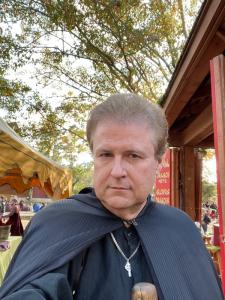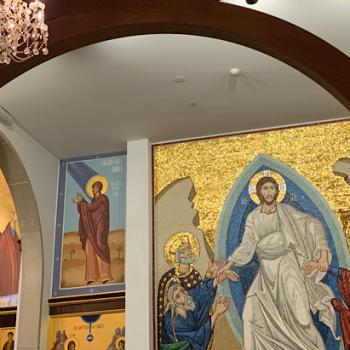 I learned a good bit from Trickster Chases the Tale of Education by Sylvia Moore. This is the best kind of book: helping me understand some things better, challenging things I think are true, and being wrong in some interesting ways.
I learned a good bit from Trickster Chases the Tale of Education by Sylvia Moore. This is the best kind of book: helping me understand some things better, challenging things I think are true, and being wrong in some interesting ways.
Don’t be confused classical friends: education begins in story.
Plato begins his most famous story, the myth of the cave, because he wants to discuss education. From the moment I read Plato’s story, I have known that story telling and education must be connected. Science is telling “likely stories” and then seeing if we can tell them better. Religion is the revelation of the Greatest Story ever told and every person created in God’s image and every culture grasps some of that story: the Good News that God is good and that He came in the person of Jesus Christ.
So no classical educator should think stories are extra, easy, or need explanation in the curriculum. Any curriculum is itself a story we are tellling about the world. That is true of the K-College curriculum at The Saint Constantine School. Every story that is not written by God has flaws and even God uses our sins and errors to talk in the tale He is making. God so loved the world, He gave us the story of His son in Gospels, not in textbooks.
Wisdom. Let us attend.
There are many stories worth hearing: do.
How does any teacher decide what stories to study? Moore looks to community roots. This is good and I try to live that out.
Our school has a primary mission to educate Eastern Christians who will speak English as their primary language. As a result, we start our stories with the Gospels, the Mothers and Fathers of the Orthodox Church, and the works that created the English language. Our students also live in Texas: a state shaped by the Spanish and English language.
We prioritize teaching as many of the great languages of that tradition as we can. So far we offer something in: Arabic, English, French, Greek, Latin, Spanish. We aspire to Chinese and Russian soon. Long term Amharic, Romanian, and Georgian are options.
More stories, more education. Note: our reading list is limited. This is necessary, but we constantly wish we could teach more, learn more, read more. The limited time we have to learn makes me glad for eternity, where I will finally get to learn philosophy from a Christian Ethiopian perspective deeply enough to ask questions!
In general, curriculum is healthy when it knows how limited it is. Even if Christianity is true, science as we understand it is right, and republican forms of government are best, then there is still wisdom, massive amounts, that exist in other cultures, places, and times. We can be for our perspective without being automatically in opposition to learning from other points of view. The great Christians condemned paganism, but learned and used massive amounts of pagan philosophy!
Moore is attempting a similar project for Canadians and the Mi’kmaw Nation. She does so brilliantly as she wrestles with a curriculum set up from a non-Mi’kmaw perspective that in the past cut out any Mi’Kmaw worlview. Moore’s goal, even in her research presented in this text, is to do education from a Mi’Kmaw worldview.
Yes.
This is wholly commendable even if the Mi’ Kmaw worldview is wrong on some things. You have to love and understand a worldview in order to make such claims. I do not, so I will not.
Moore is right to save stories. She is morally decent in honoring the wisdom of the actual past of those she educates. Moore also attempts to challenge some of the methodology of the dominant Canadian academic culture. She is, perhaps, less successful here.
Particularly appealing is her blending of Mi’Kmaw story telling, in a similar (though different) manner as Plato, with her research. Moore strives for integration. The following is vital:
I thought about respecting both Aboriginal and Western worldviews, and how such respect contributes to the spirit of collaboration.
I love that her character Crow interrupts her presentation and challenges her thinking in the text. This is an ancient tradition indeed! (See Glaucon in Republic II not as a justification for the technique, but as a parallel.) Yet when she says there are many truths and uses (lightly) the word “epistemology,” I find her thinking shallow from any perspective. She does not engage very deeply with Mi’Kmaw perspectives and her understanding of Western (or classical Eastern) views of epistemology isn’t even wrong, just inchoate.
Meanwhile, if one teaches aboriginal students, it is a must to tell the stories they need. Rootedness in the fathers and mothers of the past is a Christian, classical, human virtue. Schools that forget this are wrong. Moore has this just right.
Her views on religion are less worked out. Moore does not seem to consider that religion like science might not have multiple “truths” just one Truth dimly seen by all of us.*
Still, this book is a must read and . . .
The Braxton County Monster Intervenes (In the style of Sylvia Moore)
“Blah, blah, blah.”
“What?” I said. I looked up to see the mythical monster of West Virginia come for a close encounter of the philosophical kind.
”This is what you get when you go off to fancy East Coast schools and forget what your grandparents taught you . . . “
”Wait . . .” I looked at the Braxton County Monster, the alien beast-man of childhood stories with interest. He was a shadow that haunted my dreams.
”You know you have more questions, but your education prevents you from asking them.” Said the Beast.
“True. I don’t want to be untrue to my roots while writing about a writer who says to be true to your roots . . . “
”Shut up.” The Monster had little time for footnoting arguments, because when you have to farm on a hillside, work is brutal, quick, and taxing.
“What?” I replied.
”You know that you had more questions about this book that you are not saying to be nice or in the falseness to your own roots that Grad School taught you,” the Monster grunted.
“I do wonder.”
“What? Say it.”
“Christian worldview produced science, so forms of it are compatible with science. That doesn’t mean every worldview is. What if one is not? Aren’t some religious claims false? Is understanding religious claims as non-literal actually what original Mi’Kmaw sages thought? Or is this way of thinking borrowed from liberal Protestantism?”
”Yes?”
”Isn’t it weird to write a book while trying to regain a culture that did not write books?”
”More.” The Monster coughed, coal dust I think, and stared at me unblinkingly.
“Much of the practices descibed in the book seemed to owe a great debt to Western thinkers like Locke. Was Mi’Kmaw culture school based at all? Why go to school? If one wishes to recover a worldview that was not school based, shouldn’t one reject school?”
“Ha.” The Monster vanished into the mist and the moonshine as he always does.
Authentic education without cultural appropriation is hard. Cultural relativism has obvious value, but looks to be obviously false in other ways. What if listening to the wisdom of the Braxton County Monster would set back West Virginia? Maybe we should move on to better stories, even if those are not the stories our grandparents told?
I must keep thinking.
—————————
*Note: I think Jesus is God’s revelation of God to humankind. Christianity is the deep truth. However, even if this is true, we should not get intellectually imperialistic. We do it, understand it, and practice it . . . Badly. As a result, we can learn from anyone.












